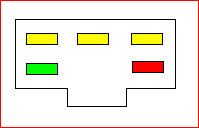It's not a 7lb weight reduction, surely?? Are you saying that a lithium battery for an XS1100 is 7lbs lighter? I don't think an XS1100 lead/acid battery even weighs that, does it?? ? 
Galespeed wheels are even lighter.... 50% weight reduction v OEM..... that's a lot of bites.....

Galespeed wheels are even lighter.... 50% weight reduction v OEM..... that's a lot of bites.....





Comment